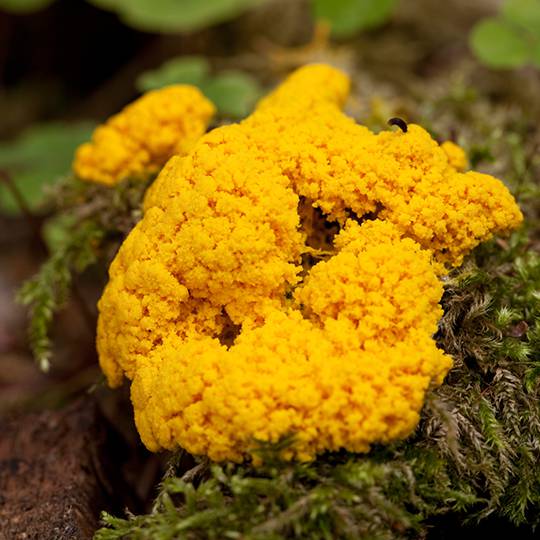
Slime mold (Mucilago spp.) is a lawn disease that grows best in hot, humid conditions—usually where temperatures reach at least 75ºF degrees. This non-parasitic disease is less likely to do long-term damage to your lawn than others. While the fungal spores that give slime mold its color can block some light from reaching the grass blades, it is not usual for the grass to turn yellow beneath it.
Most varieties of slime mold can often be eradicated by simply raking the grass. If left alone, the disease vanishes on its own within weeks. Slime mold outbreaks are most common in late summer when the weather is warmer, but there are certain types that can infect lawns from spring through summer.
Slime Mold Signs and Symptoms
Eye-catching in appearance, the blue-gray, yellow, and black shades of slime mold stand out against green grass. Although the colors diminish after a few weeks and return your lawn to its original condition, it is possible for some slight yellowing to appear due to spores that prevent sunlight from reaching the grass blades.
Less common varieties of slime mold appear on wood-based materials instead of turfgrass. These slime molds are fairly common in and near forested areas and are transported by wind. Their frothy appearance is often compared to dog vomit or scrambled eggs.
Slime Mold Prevention
Slime mold can be prevented by reducing humidity. This can be done by watering early in the day during the summer—before the sun can heat any of the moisture left on the blades of grass. Core aeration assists in reducing humidity and helps limit the spread of slime mold during fall and winter when the disease is most prevalent. Avoid applying nitrogen in order to aid your lawn’s growth while the slime mold is active. While fungicides are seldom required after an infection, they can be useful in averting an outbreak.
Call Cardinal Lawns today with any questions about slime mold and general lawn maintenance.
Need Help with Slime Mold?
Call Cardinal Lawns today at 614-808-4446 and let's talk about how we can help treat for Slime Mold and other common Ohio lawn diseases.
Get a Free Quote